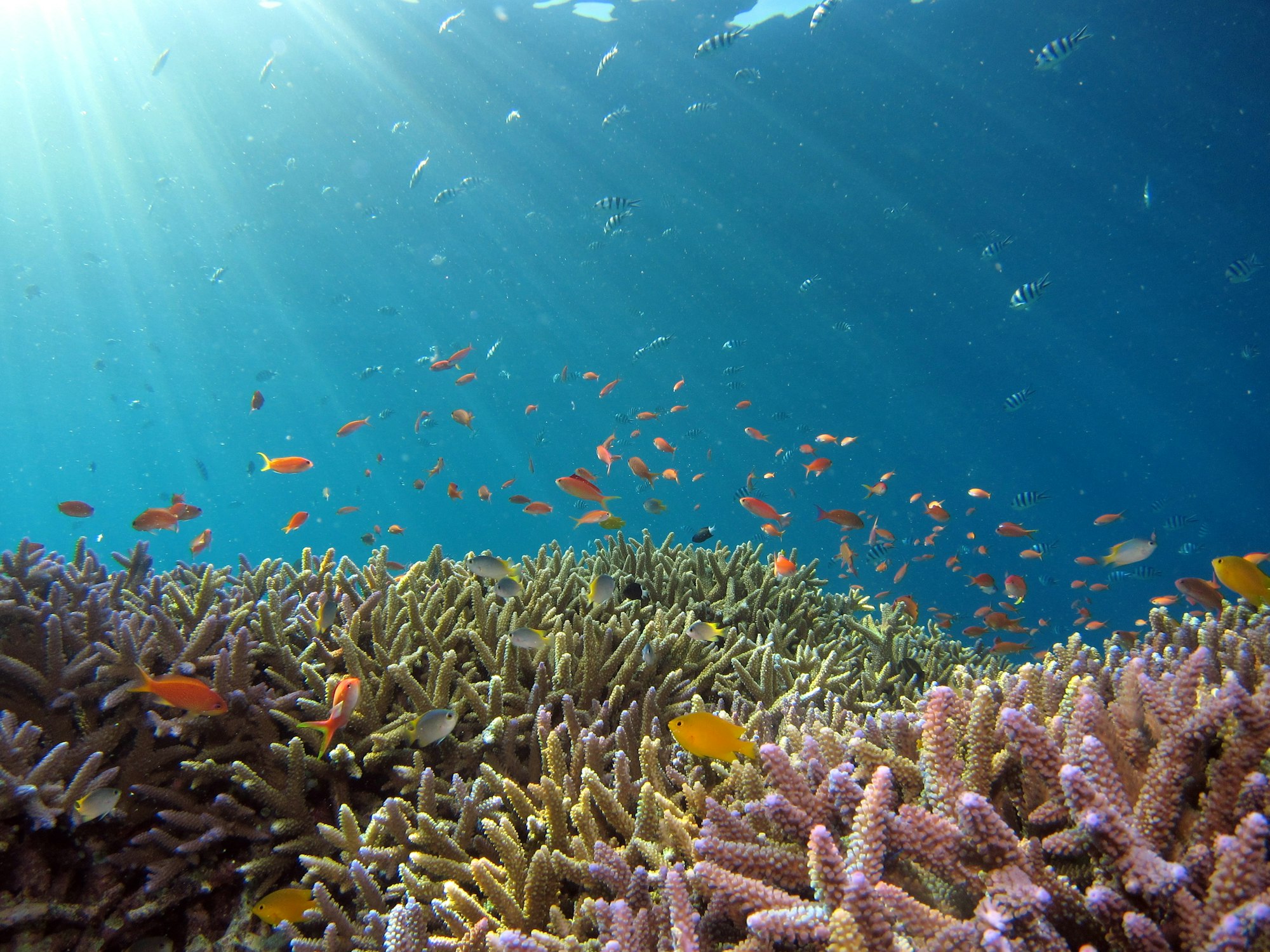
La grande barrière de corail est le plus grand récif corallien du monde, situé en Australie sur la côte nord-est. Elle s’étend sur plus de 2300 km et contient 900 îles et elle a été classée au patrimoine mondial de l’UNESCO depuis 1981. La grande barrière de corail est connue pour ses eaux transparentes et ses plongeons en apnée. Les récifs coralliens sont composés d’un squelette calcaire formé par la présence de coraux qui vivent en symbiose avec des algues unicellulaires photosynthétiques nommées zooxanthelle.
The Great Barrier Reef is the world's largest coral reef, located in Australia on the northeast coast. It stretches over 2,300 km and contains 900 islands, and has been a UNESCO World Heritage Site since 1981. The Great Barrier Reef is known for its transparent waters and snorkeling. Coral reefs are composed of a limestone skeleton formed by the presence of corals that live in symbiosis with unicellular algae called zooxanthellae.
La grande barrière de corail est l'habitat de 25 % des espèces de poissons océaniques du monde et elle abrite une diversité de la faune marine qui dépasse les 2 000 espèces. Les raies manta, les tortues et les requins sont quelques-unes des espèces présentes dans la barrière de corail. Des mammifères comme la baleine à bosse, le dugong, le dauphin à long bec y vivent aussi.
The Great Barrier Reef is the habitat of 25% of the world's ocean fish species and is home to a diversity of marine life that exceeds 2,000 species. Manta rays, turtles and sharks are some of the species found in the barrier reef. Mammals such as the humpback whale, the dugong, the long-beaked dolphin also live there.
La grande barrière de corail est confrontée à de nombreux défis tels que les cyclones et la surpêche. Pourtant, la barrière est particulièrement vulnérable aux effets du changement climatique, car la hausse des températures de la mer endommage le corail. Les coraux se nourrissent d’algues qui vivent dans leurs tissus et en absorbent également l’oxygène. Ils jouent un rôle vital dans les écosystèmes marins dont ceux de la grande barrière de corail. Le réchauffement climatique risque de rendre ces coraux incapables de survivre, ce qui entraînera la disparition d’un habitat essentiel pour plus d’une centaine d’espèces de poissons, d’oiseaux et d’animaux marins. Le réchauffement climatique peut également contribuer au changement des saisons qui nuit au cycle biologique des organismes vivants.
The Great Barrier Reef faces many challenges such as cyclones and overfishing. Yet the barrier is particularly vulnerable to the effects of climate change, as rising sea temperatures damage the coral. Corals feed on algae that live in their tissues and also absorb oxygen from it. They play a vital role in marine ecosystems including those of the Great Barrier Reef. Global warming threatens to render these corals unable to survive, leading to the loss of critical habitat for more than 100 species of fish, birds and marine animals. Global warming can also contribute to the changing of the seasons which affects the biological cycle of living organisms.
Cependant, il existe un effort international pour sauver la grande barrière de corail. En 2011, une organisation appelée « Ocean Elders » qui consiste un groupe d'anciens chefs d'État et d'autres personnalités influentes, était fondé pour sauver la Grande Barrière de Corail et plus généralement pour protéger l'océan. Ils ont déjà organisé une campagne afin d'attirer l'attention des dirigeants politiques sur l'importance cruciale de protéger cette poche biologique unique au monde avant qu'il ne soit trop tard.
However, there is an international effort to save the Great Barrier Reef. In 2011, an organization called "Ocean Elders" which consists of a group of former heads of state and other influential figures, was founded to save the Great Barrier Reef and more generally to protect the ocean. They have already organized a campaign to draw the attention of political leaders to the critical importance of protecting this unique biological pocket before it is too late.
✏️ Mots et Phrases Clés
récif corallien nm.
coral reef
s'étendre v pron.
to extend, to stretch out
la surpêche nf.
overfishing
entraîner vtr.
to bring about, to lead to
🔥 Leçon de Grammaire
Ne explétif
Expletive ne
The ne explétif does not add any meaning – negative or otherwise – to the sentence; it’s just there to draw attention to what precedes it. It’s used after certain verbs and expressions, including avant + que, (which requires the subjunctive).
« avant qu'il ne soit trop tard »
"before it's too late"
Ready to improve your French?
Get a new edition in your inbox, every Sunday.